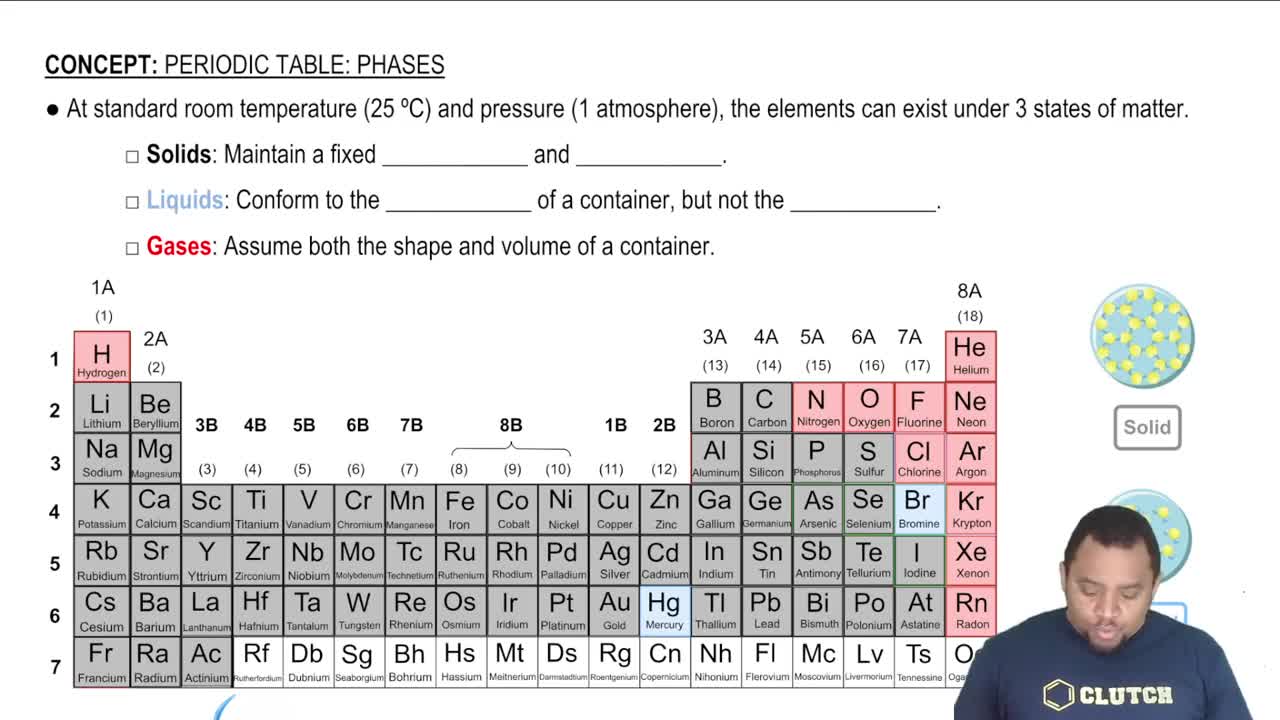Here are the essential concepts you must grasp in order to answer the question correctly.
Entropy (∆S)
Entropy, denoted as ∆S, is a measure of the disorder or randomness in a system. A positive change in entropy (∆S > 0) indicates an increase in disorder, often associated with the production of gas from solids or liquids, or the mixing of different substances. Understanding how the states of matter change during a reaction is crucial for predicting the sign of ∆S.
Recommended video:
Entropy in Thermodynamics
States of Matter
The states of matter—solid, liquid, and gas—play a significant role in determining the entropy of a system. Gases have higher entropy than liquids, which in turn have higher entropy than solids. When analyzing reactions, recognizing the changes in states of the reactants and products helps in assessing whether the overall entropy increases or decreases.
Recommended video:
Thermodynamic Reactions
Thermodynamic reactions involve the study of energy changes and the direction of chemical processes. In this context, reactions can be evaluated based on their enthalpy (∆H) and entropy (∆S) changes. Understanding how these factors influence the spontaneity and equilibrium of reactions is essential for determining which reactions result in a positive change in entropy.
Recommended video:
First Law of Thermodynamics




